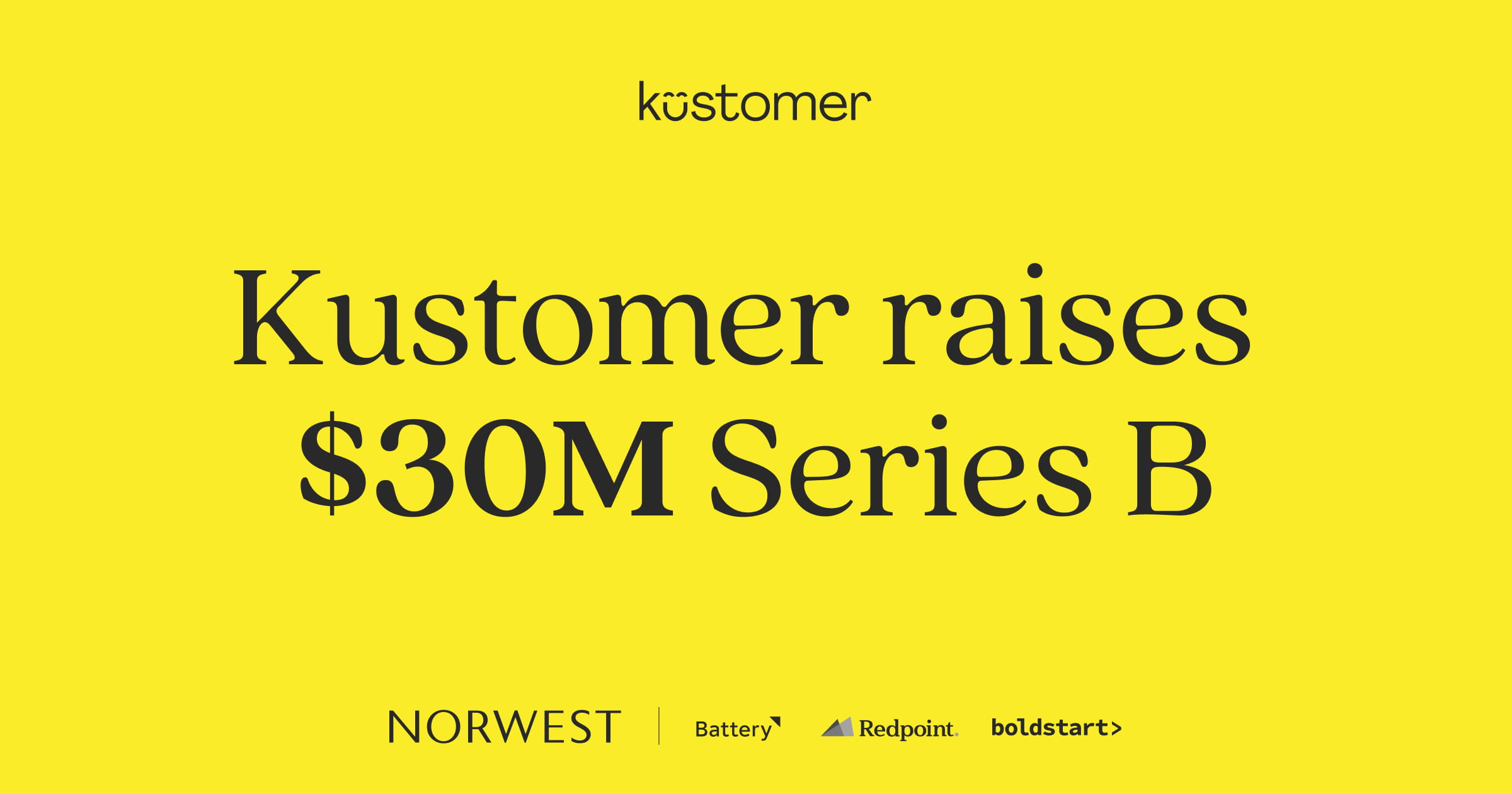The customer experience teams of today look very different from the teams that CX leaders built their careers working in - perhaps even just a few years ago. Today, service teams must do more than resolve customer issues; they must leverage technology, provide deeper insights, and elevate the customer experience beyond what automation alone can deliver. CX leaders face important shifts in how they ensure their workforce is equipped to handle these wide-ranging responsibilities.
In this blog, we’re bringing you insights from Audrey Weber, the head of customer success and Sam Chandler, the director of customer success here at Kustomer.
We’ll cover:
- Hiring in age of AI
- How to get buy-in for headcount
- Expanding efficacy with self-service
- Automating agent tasks
- AI-powered customer service
Hiring in the age of AI
As you look to develop your CX workforce, the skills and roles your team will have are likely already shifting. Advances in customer service technology change the way your agents work and the way your customers interact with your brand, meaning you need to look for different skills when deciding who to bring on to your team.
Some of the core skills that hiring managers sought in customer experience workers were:
- Empathy: Genuinely understanding and connecting with customers’ emotions and frustrations.
- Patience and resilience: Remaining calm and composed under pressure and difficult interactions.
- Active listening: Strong attentiveness to customer concerns, ensuring accurate responses and resolutions.
- Problem-solving skills: Thinking critically and resolving issues efficiently, perhaps even needing to navigate unclear ways to find relevant information.
- Clear communication: Articulate, professional, and concise verbal and written communication skills.
These are still important traits to have in general, but with the rise of AI, there are new attributes that CX leaders should evaluate in their staff members.
In addition to technical acumen needed to use customer service technology, Audrey says she looks for: “I want team members to be really curious about the customer experience and take that a step further - using that curiosity to impact change and feed data into our systems, AI or not. It’s about using that to realize better outcomes for our customers, team, and business.”
“The curiosity component is what’s going to separate us from the machine,” Sam agrees.
This may look like shifting the types of team members you have. Perhaps you have fewer front line agents and instead hire more operations team members that find ways to solve bigger problems or produce more one-to-many customer service resources. Alternatively, you may hire specialists for your most valuable segments, or agents that act more like consultants who can drive repeat sales and bring in a higher average order value.

How to get buy-in for staffing resources
Overcoming the status quo is the real challenge when it comes to getting buy-in for staffing resources. It can be challenging to envision the impact of additional resources if a department seems to be handling things pretty well or hasn’t had a major shake-up that exposes the issues of understaffing. CX leaders need to make the business impact clear to executives to get the greenlight.
When advocating for more customer service agent headcount, align your request with three key business areas:
- Product
- Team
- Business
First, connect staffing needs to the product, emphasizing how better support enhances the customer experience, reduces churn, and increases sales. Second, tie it to the team, showing how appropriate staffing prevents burnout, improves agent performance, and boosts retention.
Finally, frame it within your business’ overall goals, demonstrating how investing in support drives revenue growth or reduces churn, reduces costly escalations, and improves efficiency. Pull from your organization’s data, goals, and pain points to tailor your pitch to help overcome the status quo.
“Use these to craft a story in a way that will get their ears to perk up,” Sam advises.
By linking headcount to these pillars, you position customer service as a strategic asset, not just an expense. When customer service is seen as a profit center, you improve your chances of getting the resources you need.
Be prepared to ask big, and come with the data to back it up. Audrey says, “I always shoot for the moon, but I make sure I have a cost impact story and an ROI story. I also am prepared to talk through when we’re going to see a return. And I’m open to a heated debate around what the business can or can’t tolerate. I’m very intentional about what the tradeoffs are.”
However, even with the best of presentations and most compelling stories, your leadership team still can’t always make the headcount resources available. Then, you’ll have to find ways to do more with your existing resources or a tool rather than headcount. Let’s dig into some of those now:
Scaling with self-service
Self-service should be an important part of your customer support strategy. It’s what customers want and expect. Plus, it’s super cost effective for your business, as one resource can mitigate hundreds or thousands of support conversations.
Sam says, “There is a larger appetite to automate everything. Interestingly, the founder world is thinking, ‘How can we slow our capital expenditure?’ It guides founders to think, ‘How are you talking to your customers?’ Self service has been table stakes. Not having an education center is like not having a website. It is a very easy way to balance out your resources until you add another person.”
However, self-service resources are meant to augment your human support, not replace it. So what can you do when faced with the pressure to handle increased support needs with self-service?
“There were absolutely levers I’ve pulled to lean into self-service and what we could do to scale our approach. And then we had a conversation around tradeoffs. If the business expected a certain level of service around KPIs, I shared what we could realistically do tied to business metrics,” Audrey says. “I’m a big believer in any sustainable, scaled approach. I actually think that’s what most consumers want. Building out self-service isn’t an overnight initiative.”
Here are some tips to see success with self-service to augment your workforce:
- Be realistic around timing. It takes time to audit your knowledge base, identify the gaps, prioritize the topics, write robust self-service articles and make videos, and distribute these resources – amidst all of your team’s other priorities!
- Use a phased approach. Weave in a certain amount of new and updated self-service resources on an ongoing basis.
- Consider AI plus self-service. Those investments can go hand-in-hand as the AI can address customer inquiries leveraging the self-service materials your team produced.
Get Kustomer’s guide on how to improve your brand’s customer self-service with actionable tactics.
AI-powered customer service
The next logical option is to expand your workforce’s capabilities by using automation and AI to handle some of the workload. Consumers are familiar with seeing chatbots and are becoming more responsive to AI-powered customer service, and new AI Agent technology means the service quality will be much higher than simple chatbots.
“If customers are getting what they need, with a personalized response, I actually think consumers are becoming way more comfortable engaging with AI, knowing their needs are going to be met,” Audrey says. “As people see more wins like faster resolution times, I think they’re going to get way more comfortable and be totally open to engaging with AI. It’s about speed and empathy and AI can deliver it.”
Sam points out, “No one really cares how you solve the problem. If you can do it with AI, then great. That is one way to supercharge what you offer to your customers.”
Automating agent tasks
Finally, there are other ways to bring in automation to your CX workflows to make your workforce’s jobs easier and more efficient.
Audrey says, “I remember our customer service representatives would have five or six tabs open to get all the data they need to understand what is the marketing outreach the customer just saw, how long have they been a customer, and what’s the return history. I’m so passionate about the customer experience – having contextual, compassionate service, whether that’s human or not. Where I think this is most powerful is all of the context right at a rep’s fingertips.”
Harvard Business Review studied 20 different teams and found that the average worker lost 9% of their time toggling between different apps and windows. Beyond the lost time, constant toggling also led to lower quality work because of the mental energy required to context-switch. Automating some of this work or using tools that bring more information into the same view can cut down on this wasted time and boost your existing team’s productivity.
What might this look like?
- AI-generated summaries of customer communications to speed up context gathering
- Using an omnichannel support tool with a holistic customer dashboard, like Kustomer’s timeline view
- Automations to create, assign, and process internal work, like Tasks
- Routing customer conversations automatically based on agent skills and qualifications
Automating low impact tasks will free your workforce to work on more meaningful tasks, like delivering a higher level of service or finding creative solutions to customer problems.
Conclusion
Focus on impact at every step when evaluating your workforce’s staffing, needs, and opportunities for growth. To power your changing workforce and maximize the team you already have, the right customer support technology is essential.
Interested in learning more? Talk to sales to see how Kustomer can augment your team and supercharge your brand’s customer service




